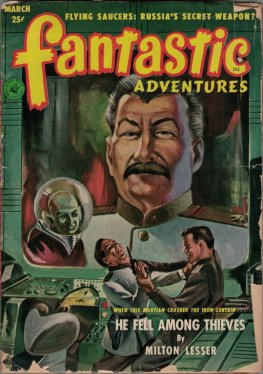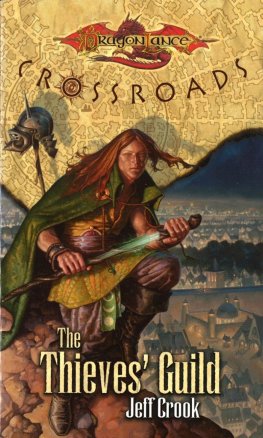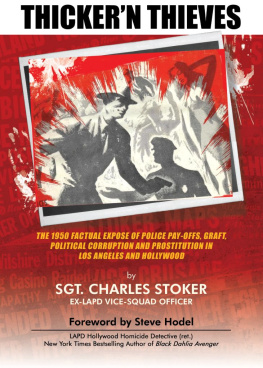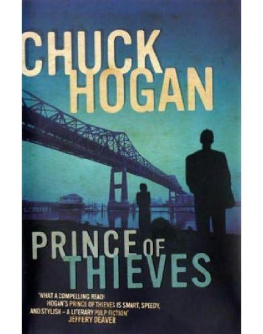Great Pretenders
Crime & Society
Series Editor John Hagan
University of North Carolina-Chapel Hill
Editorial Advisory Board
John Braithwaite, Robert J. Bursik, Kathleen Daly, Malcolm M. Feeley, Jack Katz, Martha A. Myers, Robert J. Sampson, and Wesley G. Skogan
Great Pretenders: Pursuits and Careers of Persistent Thieves, Neal Shover
Rape and Society: Readings on the Problems of Sexual Assault, edited by Patricia Searles and Ronald J. Berger
Alternatives to Imprisonment: Intentions and Reality, Ulla V. Bondeson
Inequality, Crime, and Social Control, edited by George S. Bridges and Martha A. Myers
FORTHCOMING
Poverty, Ethnicity, and Violent Crime, James F. Short
Youth and Social Justice: Toward the Twenty-First Century, Nanette J. Davis and Suzanne E. Hatty
Crime, Justice, and Revolution in Eastern Europe, Joachim J. Savelsberg
Crime, Justice, and Public Opinion, Julian Roberts and Loretta Stalens
The White-Collar Offender, Michael Benson and Francis T. Cullen
First published 1996 by Westview Press
Published 2018 by Routledge
711 Third Avenue, New York, NY 10017, USA
2 Park Square, Milton Park, Abingdon, Oxon OX14 4RN
Routledge is an imprint of the Taylor & Francis Group, an informa business
Copyright 1996 Taylow & Francis
All rights reserved. No part of this book may be reprinted or reproduced or utilised in any form or by any electronic, mechanical, or other means, now known or hereafter invented, including photocopying and recording, or in any information storage or retrieval system, without permission in writing from the publishers.
Notice:
Product or corporate names may be trademarks or registered trademarks, and are used only for identification and explanation without intent to infringe.
Library of Congress Cataloging-in-Publication Data
Shover, Neal.
Great pretenders : pursuits and careers of persistent thieves / Neal Shover.
p. cm. (Crime and society)
Includes bibliographical references and index.
ISBN 0-8133-8730-2 (he.) ISBN 0-8133-2811-X (pbk.)
1. BurglaryUnited StatesCase studies. 2. ThievesUnited States. I. Title. II. Series: Crime and society (Boulder, Colo.)
HV6658.S54 1996
364.1'62dc20
96-464
CIP
ISBN 13: 978-0-8133-2811-9 (pbk)
To the memory of my parents,
and to Joe Newman,
who never dreamed it would come to this
In the late evening of December 5, 1980, Michael Halberstam, a nationally known cardiologist and author, and his spouse returned to their Washington, D.C., home after spending the evening out. Inside their home the couple encountered a burglar, who shot Mr. Halberstam and then fled from the house. Accompanied by his wife and seriously wounded, Dr. Halberstam left the house, took the wheel of their automobile, and began driving to a nearby hospital. En route he saw the burglar on foot, intentionally struck him with the automobile and continued on. Dr. Halberstam died on the operating table later that evening. The injured burglar was captured by police, convicted of homicide, and sentenced to a lengthy prison term.
The Halberstam burglary and homicide received extensive media coverage, not only because the victims were socially prominent and the crime played out many citizens worst fears about street crime but also because of what subsequently was learned about the burglar, Bernard Welch. While incarcerated for burglary in a New York prison several years earlier, Welch escaped, resumed his criminal pursuits, and accumulated a substantial personal fortune in the process. He owned a home in an upscale suburb of the District of Columbia, a vacation home in Minnesota, and several luxury automobiles. He had driven a Mercedes to the Halberstams neighborhood on the evening of the ill-fated burglary. Media accounts of the degree and trappings of his success were splashed before the public for weeks. Although dozens of residential burglaries were reported to Washington, D.C., police on the day the Halberstams were victimized, the citys newspapers carried no account of others. The reasons doubtless include the fact that most burglars, their exploits, and their victims are not nearly so newsworthy as Bernard Welch and the Halberstams.
In the contemporary world, most states prohibit or regulate literally thousands of behaviors, but eight crimes and those individuals suspected or convicted of them are at the core of criminology textbooks and undergraduate criminology courses. Called Index crimes by the Federal Bureau of Investigations uniform crime reporting program, they are murder and nonnegligent manslaughter, forcible rape, aggravated assault, arson, robbery, burglary, larceny-theft, and motor vehicle theft. Collectively, the last four are a majority of Index crimes annually reported to the police in the United States. In 1992, for example, the nearly 12.5 million robberies, burglaries, larcenies, and vehicle thefts reported to local police represented 91 percent of all reported Index crimes.
Index property crimes (including robbery) and those who commit them, in fact, are a large part of the workload of the entire criminal justice apparatus. Of all persons confined in U.S. state prisons in 1991, nearly four in ten were serving sentences for robbery, burglary, or other property crimes. These crimes rank high in the concerns of many citizens. Odds are high, for example, that todays urban resident in the United States has been or knows a victim of burglary. Little wonder that Index offenders, particularly thieves, receive so much attention from academic criminologists, from the criminal justice enterprise, and from policymakers.
Few thieves commit crime with Bernard Welchs degree of craft, monetary success, and good luck. Whereas he carefully scrutinized victims jewelry and other valuables, most household burglars content themselves with cash or items, seized hastily, that can be disposed of easily in their home neighborhood and circle of contacts. Many, perhaps a majority, of thieves steal and hustle with others, an operating style that leaves them vulnerable to their partners failings and misfortunes. Welch had no co-offenders and no one, therefore, whose mistakes or loose tongue could rebound to harm him.
Persistent thieves, the subjects of the analysis presented in this book, are distinguished by persistence at common-law property crimes despite their, at best, ordinary level of success. All have at least one adult conviction for robbery, burglary, or theft but return to further crime commission afterward. Many of them commit crime over several years and serve multiple jail or prison terms in the process. In a word, they are men who failed to learn their lesson. The crimes they commit are those that invariably and immediately come to mind when the subject of crime is raised in conversation or featured in the media. Their crimes victimize large numbers of ordinary citizens but receive little media attention. The sociological origins, activities, and criminal careers of these unsuccessful persistent thieves are the focus of my attention in this book.
The men whose lives underpin it are fitting subjects for the label career criminal. Although career criminals have been depicted as little more than domestic enemies, the suggestion that most are ordinary folk ... caught being ordinary once too often also captures an important truth about them and their lives. The label














